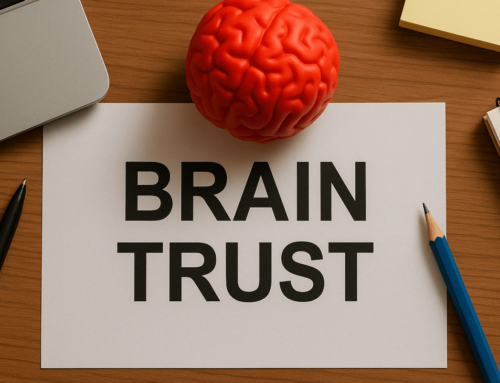How can we elevate global programs with the 360°-feedback tool LWS? This is the final part 4 of the 4-part series on this topic, where we use a real-life case study to discuss success factors for global programs and dive deep into transfer design and behavioral change. In this article: Critical questions for sucessful leadership development programs. If you missed parts 1-3, you might want to read why your current programs aren’t sticking (pt1), how framework based 360° feedback tools might benefit your programs (pt2) or how to measure leadership development ROI (pt3).
Let’s dive into part 4.
Table of contents
Over the past three articles, we’ve examined a 12-month leadership development program that’s producing remarkable results. We’ve explored the integration principle, the power of framework-based feedback, and the importance of measuring behavior change.
But here’s what we need to be clear about: This isn’t a blueprint for you to copy.
Every organization is different. Your culture, challenges, readiness, strategic priorities, and constraints are unique to you. What works brilliantly in one context might fall flat in another. At Think Beyond, our fundamental belief is that effective leadership development must be tailored to your specific context. There are no off-the-shelf solutions that magically work everywhere. There are only principles that can be adapted and designs that emerge from deep understanding of your organization’s needs. Today, we’re exploring the critical questions you should ask before developing leadership development initiatives —and how to think about whether approaches like LWS fit your specific context.
1. The Think Beyond Philosophy: Why There Are No Blueprints
Let’s start with why we don’t believe in one-size-fits-all programs.
Every Organization Has a Unique Fingerprint
Your organization’s context is unique:
- Culture: What behaviors are rewarded? How is vulnerability perceived?
- Challenges: Growth? Transformation? Consolidation?
- Readiness: Are leaders hungry for development or skeptical?
- Systems: What frameworks and processes already exist?
- Resources: What time, budget, and capability do you have?
The 12-month program we’ve examined emerged from one organization’s specific needs—transformation challenges, global operations, commitment to well-being, readiness for long-term investment. Your context is different. Your design should be too.
What We Believe: Principles + Tailored Design
Instead of blueprints, we work with principles—foundational truths about how adults learn and change behavior—combined with deep understanding of your specific context.
The principles we’ve explored in part 2 of this series:
- Integration over isolation
- Trust before vulnerability
- Journeys not events
- Acceptance matters more than awareness
- Real challenges not theory
- Measurement drives accountability
These apply broadly. But HOW you apply them—the modules, tools, timing, structure—must be tailored to your organization.
2. The 5 Critical Success Factors
While specific designs vary, certain success factors matter for any transformational leadership development initiative.
2.1. Time: Why Rushing Kills Transfer
Behavior change requires time for practice, reflection, and habit formation. Multiple touchpoints spread over months, space between sessions for application, and sufficient time to move through awareness → acceptance → action.
The right question: “What’s the realistic timeline for the behavior change we’re seeking?”
2.2 Psychological Safety: Trust Before Vulnerability
Leaders won’t be honest about development areas until they trust the process. Build relationships before asking for vulnerability, frame feedback as developmental, ensure leadership modeling, and give leaders control over what they share.
The right question: “What conditions create safety for genuine development conversations?”
2.3 Real Challenges: Theory vs. Practice
Transfer happens when leaders work on actual challenges they’re facing. Every module should address real organizational challenges, leaders bring their own situations, and progress is visible to stakeholders.
The right question: “What challenges are our leaders actually facing, and how can development help them address those?”
2.4 Long-Term Commitment: Journeys Not Events
One-off workshops create awareness at best. Sustained development requires programs measured in months, multiple opportunities to revisit insights, built-in accountability, and integration with ongoing processes.
The right question: “What ongoing structure would support sustained development?”
2.5 Measure Twice: Proving What Matters
If you’re not measuring behavior change, you can’t prove impact. Use baseline measurement, re-measurement after sufficient time, focus on behavioral shifts (not just satisfaction), and validated tools that enable comparison.
The right question: “Are leaders behaving differently, and is it creating better outcomes?”
3. The Critical Questions: Assessing Your Readiness
Before embarking on transformational leadership development, ask yourself these questions honestly.
- Do we have organizational commitment for long-term development?
- Executive sponsorship and active participation
- Leader time for regular sessions over 6-12 months
- Patience for results (6-12 months minimum)
- Integration with performance management
- Is our culture ready for honest feedback?
- How is vulnerability currently perceived?
- Do leaders openly discuss their own development?
- Is feedback seen as a gift or a threat?
- Can we integrate development with existing systems?
- Can development goals flow into performance management?
- Will we connect to competency frameworks?
- Can we link to advancement opportunities?
- Are we willing to measure behavioral change?
- Baseline and re-measurement
- Sharing data transparently
- Acting on what the data reveals
- Do we need global consistency with cultural sensitivity?
- Developing leaders across multiple countries?
- Need for consistent framework that works globally?
- Tools validated across cultures?
Your honest answers reveal whether this approach fits your context—and if not, what adaptations might work.
4. When LWS Makes Sense for Your Context
Throughout this series, we’ve highlighted LWS because its framework-based approach creates powerful results. But when does it specifically make sense?
LWS is particularly well-suited when you’re:
- Developing leaders across multiple countries (global validation + 20+ languages)
- Needing science-based credibility (Circumplex framework + decades of research)
- Wanting to demonstrate measurable ROI (designed for re-measurement)
- Building feedback culture (developmental framing normalizes conversations)
- Integrating individual, team, and organizational development (Circumplex extends to culture tools)
- Working with various leadership levels (new managers through C-suite)
When other approaches might be better:
- Working with individual contributors, not leaders
- Needing very rapid feedback on short timelines
- Culture isn’t ready for developmental vulnerability
- Budget is extremely constrained (consider starting with a pilot)
The key: At Think Beyond, we design programs tailored to your needs. Sometimes that means LWS, sometimes other tools, sometimes a combination. We’re tool-agnostic—we use what best serves your context and goals.
The question isn’t “Should we use LWS?” It’s “What approach will best serve our leaders and organization?”
5. From Insight to Action: Your Next Steps
You’ve explored the full journey: why integration matters, what makes framework-based feedback effective, how to measure impact, and what questions to ask about your context.
If this approach might work for your organization:
- Assess your readiness – Review the five critical questions honestly. Understand your starting point.
- Identify your real challenges – What leadership challenges exist right now? Strategic execution? Change management? Collaboration? Any program should address real challenges, not abstract competencies.
- Consider a pilot – Test with 15-20 leaders over 6-9 months. Measure outcomes. Learn before scaling.
- Get expert support – Effective design requires expertise in adult learning, program design for transfer, tool selection, and measurement strategy.
- Start where you are – Can’t do 12 months? Try 6 months with four touchpoints. Can’t measure with sophisticated tools yet? Use stakeholder interviews. The principles scale to whatever you can do in your current context.
6. The Invitation: What’s Possible
We started this series with a simple premise: Most leadership development fails because it’s designed as events, not journeys.
When you integrate development with organizational systems, use framework-based tools, build trust before vulnerability, allow time for acceptance, and measure behavior change—tailored to your specific context—the results are transformative.
Not just better leadership development, but:
- Leaders who genuinely transform how they show up
- Teams who notice and benefit from changes
- Organizations where feedback becomes normalized
- Cultures that value development as much as delivery
- L&D functions that can prove their impact
This is hard work. It requires more time, investment, and commitment than two-day workshops. But the outcomes are incomparably better.
If you want leaders who create lasting impact—who transform their own effectiveness, their teams’ capabilities, and ultimately organizational culture—it’s worth it.
7. Where to Go From Here
If this series has sparked ideas about how you might elevate leadership development in your organization, we’d love to continue the conversation. At Think Beyond, we partner with organizations to design and deliver leadership development that creates lasting impact. Every engagement is unique because every organization is unique. Whether you’re just starting to think about transformational development, looking to strengthen existing programs, or ready to design something new—we bring:
- Deep expertise in adult learning and behavior change
- Experience designing programs across industries and cultures
- Partnership approach (we’re not vendors, we’re collaborators)
- Commitment to tailored solutions, not templates
- Focus on measurable outcomes, not just program delivery
If you’re curious about whether LWS might fit your context, we can help you think that through. If other approaches make more sense, we’ll tell you that too.
The goal isn’t to use a particular tool or program. It’s to help you create leadership development that actually works—that transforms leaders, teams, and organizational culture in measurable, meaningful ways.
8. Closing: From Awareness to Action
You’ve now moved through the full journey we set out on four articles ago:
- Part 1: Understanding why journey-based development works and what the integration principle means >>> Read here >>>
- Part 2: Exploring what makes framework-based feedback effective and how tools like LWS create breakthrough moments >>> Read here >>>
- Part 3: Learning how to measure what matters and prove that development creates real behavior change >>> Read here >>>
- Part 4: Asking the critical questions about your organizational context and readiness
You have awareness. You hopefully have some degree of acceptance—recognizing that transformational development is possible and perhaps worth pursuing in your context. Now comes action.
What will you do with these insights? How will you apply these principles to your specific challenges? What conversations will you start in your organization?





